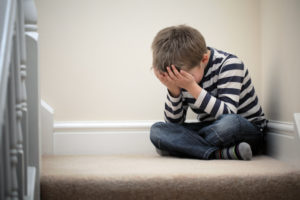How does ‘Restraint Collapse’ affect children?
Does your child walk in the door after school and…..
- Explode?
- Fall apart?
- Lose the plot?
- Struggle to cope?
- Become distresses?
Restraint Collapse is a term developed by Andrea Loewen Nair, a parenting educator. It is used to describe children who bottle up their feelings and anxieties all day, doing all they can to hold themselves together to fit in and be the same as everyone else, to then come home to their safe place and release everything. The challenge of holding in their emotional needs leaves them feeling emotionally, intellectually and physically exhausted and the entry into a safe space allows them permission to release these, often quickly and with overwhelming speed.
What can it look like:
Parents may see their child:
- Cry
- Scream
- Become angry
- Throw things
- Fly off the handle
- Be rude or disrespectful
- Being out of control
- Fatigued
- Your child being inconsolable
Does it affect all children?
Any child can experience restraint collapse, however, those children who find it challenging to regulate their emotions, are more sensitive to their environment or have special educational needs and/or learning difficulties can often be affected.
Steps at home
- Create a quiet and safe space – the day at school is overwhelming, and your child is facing the challenge of holding their feelings in, keeping the trip home from school peaceful and calm allows them space.
- Stop the questions – When we haven’t seen our children all day, we can be keen to be involved in their days and want to talk about everything they have been up to. If your child is prone to restraint collapse hold off on the questions, avoid overwhelming them with tasks, chores or directions and instead focus on connecting with your child and holding a space for them. This might be listening to some calm music in the car on the way home, having their favourite drink or snack ready for them or just walking home hand in hand.
- Have the table ready – A little bit of pre-planning can make all the difference. This may be having a snack and drink ready on the table when they arrive home, perhaps coupled with some sensory toys, sensory playdough or arts and crafts to allow them some quiet time to relax and regulate themselves in safety. Remember – consistency is key – if they walk in to the same safe space every day then there is an expectation that they can regulate and calm.
- Plan afterschool activities carefully – Too many activities after school can be overwhelming, on top of a day of overwhelm, which can push their emotions to explode later in the day and start to impact bedtime. Be careful to monitor their afterschool activities so there are evenings of downtime to balance out sports or clubs.
- Be empathetic and work together – whilst restraint collapse can be exhausting to the child, it is often challenging for parents too. Focus on connection over criticism and look at ways you can work with your child to help them manage their regulation. This may be agreeing to come home for a snack and a story or audio book rather than pushing to homework.
- Use fun physical activity – physical activity can be a great way to calm the body and release emotions, whilst also creating endorphins. Incorporate fun physical activity like scooting, trampolining or bubbles or a dance game to help release those pent-up emotions.
 Further help
Further help
For more articles about mental health visit – https://dandeliontraininganddevelopment.com/articles-resources/
To learn more about child and adolescent mental health visit – https://dandeliontraininganddevelopment.com/courses/
For resources to support child and adolescent mental health visit – https://dandeliontraininganddevelopment.com/shop/
© Dandelion Training and Development – All Rights Reserved

